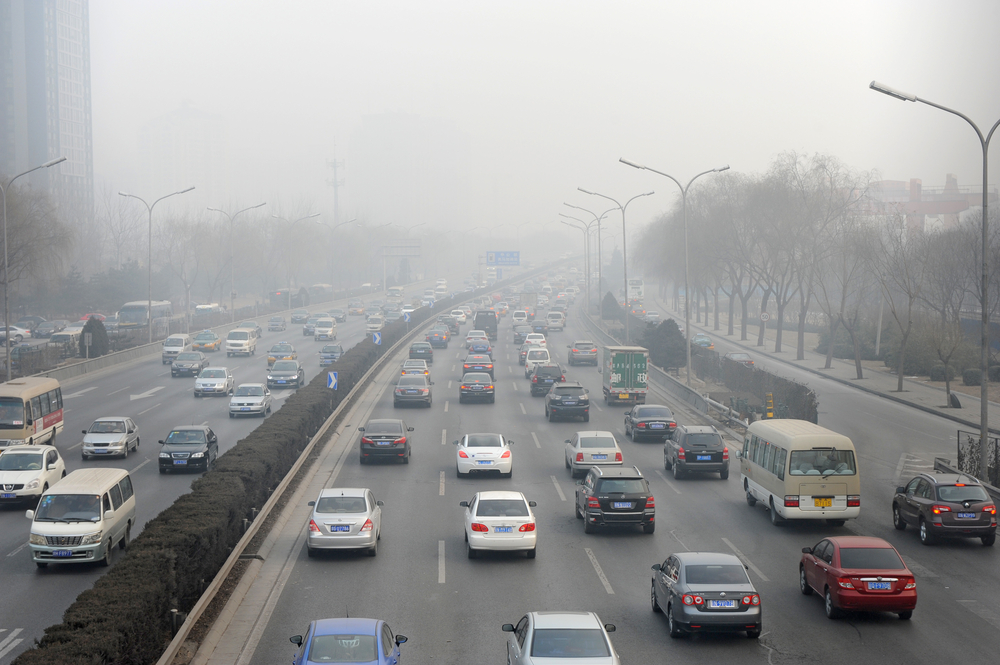WHO ‘alarmed’ by air pollution increase
Latest data from World Health Organisation suggests 8% air pollution increase since 2008, with poorest countries hit hardest
The majority of cities in ‘low and medium’ income countries that are measuring air pollution levels do not meet World Health Organisation (WHO) air quality guidelines, the organisation has claimed today (12 May).
According to the WHO, which published the latest updates to its urban air quality database, more than 80% of people living in urban areas that monitor air pollution are exposed to air quality levels that exceed recommendations set out by the global health body.
WHO has also suggested that global urban air pollution levels increased by 8% in the five years between 2008 and 2013 and is accountable for around 3 million deaths worldwide.
The WHO’s ambient air quality guidelines suggest that people should be exposed to no more than a 10 μg/m3 annual mean of PM2.5 or 25 μg/m3 over a 24-hour period. For PM10, WHO recommends that this should not exceed a 20 μg/m3 annual mean and 50 μg/m3 over a 24-hour mean. PM10 and PM2.5 include pollutants such as sulfate, nitrates and black carbon.
Today’s WHO figures suggest that there is a stark difference in the exposure to air pollution levels in high and low income cities. According to the database, 98% of cities in low- and middle income countries with more than 100,000 inhabitants do not meet the WHO air quality guidelines. However, in high-income countries, that percentage decreases to 56%.
Coverage
The database now covers around 3,000 cities in 103 countries, as more local and regional authorities recognise the dangers of high air pollution levels — having included close to 1,600 cities in 2014 (see airqualitynews.com story).
Commenting on the latest findings, Dr Flavia Bustreo, WHO assistant-director general, family, women and children’s health, said: “Air pollution is a major cause of disease and death. It is good news that more cities are stepping up to monitor air quality, so when they take actions to improve it they have a benchmark. When dirty air blankets our cities the most vulnerable urban populations–the youngest, oldest and poorest–are the most impacted.”
According to WHO, as urban air quality declines, the risk of stroke, heart disease, lung cancer, and chronic and acute respiratory diseases, including asthma, increases for the people who are exposed to pollutants.
The latest updates to the database now chart global air pollution monitoring data from between 2008 and 2013. WHO has analysed global and regional trends for the 795 cities that have recorded pollution levels during that time.
Increase
In its analysis, WHO notes that global urban air pollution levels increased by 8%, despite improvements in some regions, while in general, urban air pollution levels were lowest in high-income countries, with lower levels most prevalent in Europe, the Americas, and the Western Pacific Region.
WHO also claims that the highest urban air pollution levels were experienced in low-and middle-income countries in the Eastern Mediterranean and South-East Asia Regions, with annual mean levels often exceeding 5-10 times WHO limits, followed by low-income cities in the Western Pacific Region.
In the Eastern Mediterranean and South-East Asia Regions and low-income countries in the Western Pacific Region, WHO claims that levels of urban air pollution increased by more than 5% in more than two-thirds of the cities.
‘Alarming’
Dr Maria Neira, WHO director, Department of Public Health, Environmental and Social Determinants of Health, added: “Urban air pollution continues to rise at an alarming rate, wreaking havoc on human health. At the same time, awareness is rising and more cities are monitoring their air quality. When air quality improves, global respiratory and cardiovascular-related illnesses decrease.”
WHO is due to hold its annual World Health Assembly in Geneva later this month, where delegates will discuss a road map for an enhanced global response to the adverse health effects of air pollution.
















